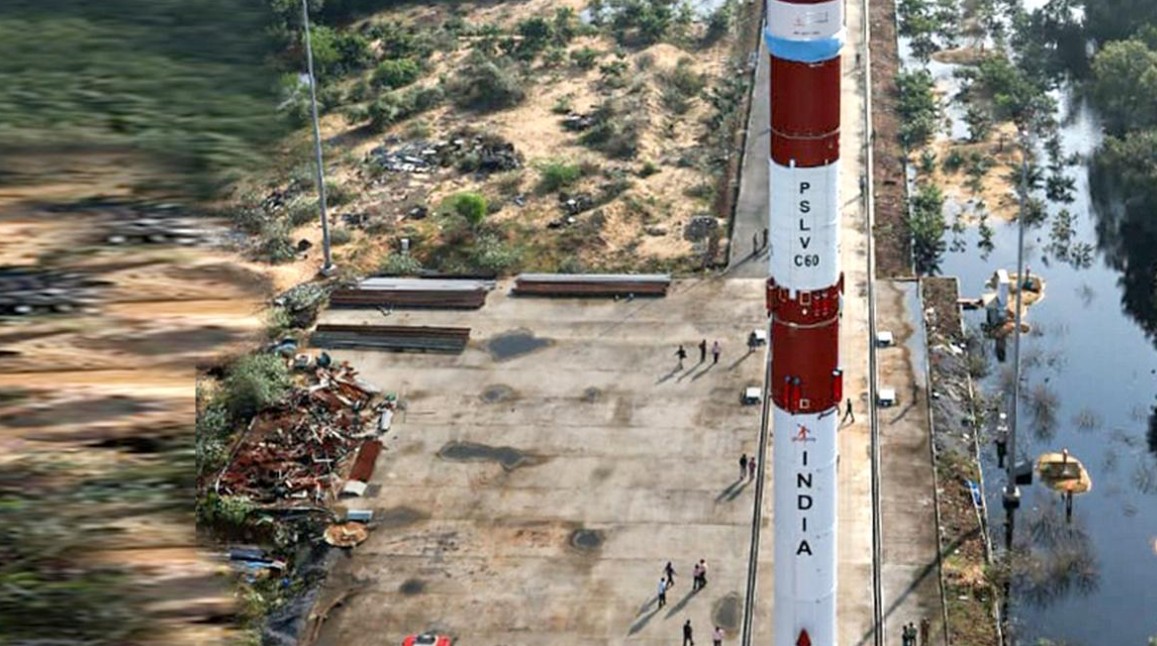The ISRO PSLV-C60 SpaDeX mission has been rescheduled and will now take place at 10 PM tonight.
The ISRO PSLV-C60 SpaDeX mission has been rescheduled and will now take place at 10 PM tonight.
ISRO‘s PSLV-C60 mission is about to make a major leap in India’s space exploration, and the excitement is building! Originally set for 9:58 PM on Monday, December 30, the launch has been slightly delayed by two minutes and is now scheduled for 10:00 PM. While the reason for the brief delay remains undisclosed, the significance of this mission is undeniable.
The PSLV-C60 mission marks a crucial step in India’s space program, as it aims to achieve orbital docking, positioning ISRO alongside global space leaders such as the US, China, and Russia. This breakthrough could lay the groundwork for India’s ambitious future space endeavors, including human missions to the Moon and the establishment of a national space station.
Launched from Sriharikota, the PSLV-C60 rocket will carry two primary spacecraft—Spacecraft A (SDX01) and Spacecraft B (SDX02)—along with 24 secondary payloads. These payloads will contribute to vital scientific research, such as resource monitoring, vegetation analysis, and capturing high-resolution images of Earth from an altitude of 470 km.
What is the docking mechanism and why is it critical in space?
The docking mechanism used in ISRO’s PSLV-C60 mission is a low-impact, androgynous system with a peripheral design, similar to the International Docking System Standard (IDSS). Unlike the IDSS, which measures 800 mm and uses 24 motors on a hexapod, this system is more compact at 450 mm and features just two motors, offering one degree of freedom for extension. The docking process and approach parameters have been rigorously tested through multiple simulations.
Docking plays a pivotal role in space operations, as it allows spacecraft to connect for crew transfers, resupply missions, and assembly of larger structures like space stations. It facilitates resource sharing, enhances mission adaptability, and is essential for deep-space exploration, modular spacecraft designs, and on-orbit repairs. Additionally, docking enables satellite servicing and refueling, advancing space exploration, fostering international collaboration, and supporting missions to destinations such as the Moon, Mars, and beyond.
ISROs SpaDex mission
The SpaDeX mission, launched under ISRO’s PSLV-C60, is focused on showcasing India’s capability to perform orbital docking—a key technology for upcoming space missions. This advancement is crucial for future endeavors, such as human space exploration and the development of India’s planned space station.
Space congestion has led to a slight delay in the launch of ISRO’s PSLV-C60 mission. Originally set for 9:58 PM, the launch has been rescheduled to 10:00 PM due to “conjunctions with other satellites in the same orbit,” according to ISRO Chairman Dr. S. Somanath.
The delay is linked to interference from satellites in the Starlink constellation, which currently comprises about 7,000 satellites in low Earth orbit. This constellation, operated by Elon Musk’s SpaceX, provides global satellite-based internet service, and the number of Starlink satellites is expected to rise to approximately 12,000. The growing number of such large satellite constellations has raised concerns about increasing traffic in space, potentially complicating satellite operations.
This is not the first time ISRO has faced such challenges. Last year, the launch of the Chandrayaan-3 mission was also delayed due to similar orbital traffic issues.
The PSLV-C60 mission, which will carry out the SpaDeX (Space Docking Experiment), marks a significant milestone. It involves the first-time integration and testing of the rocket and satellites by the private company Ananth Technologies, with assembly taking place in a newly established facility at the Satish Dhawan Space Center, Sriharikota. The mission is a major step forward for ISRO, as it aims to demonstrate space docking capabilities, which will be crucial for future projects like Chandrayaan-4 and the development of the proposed Bhartiya Antariksha Station.
Also Read-
“Airbus Secures Eutelsat Deal to Expand OneWeb Low Earth Orbit Satellite Network”
